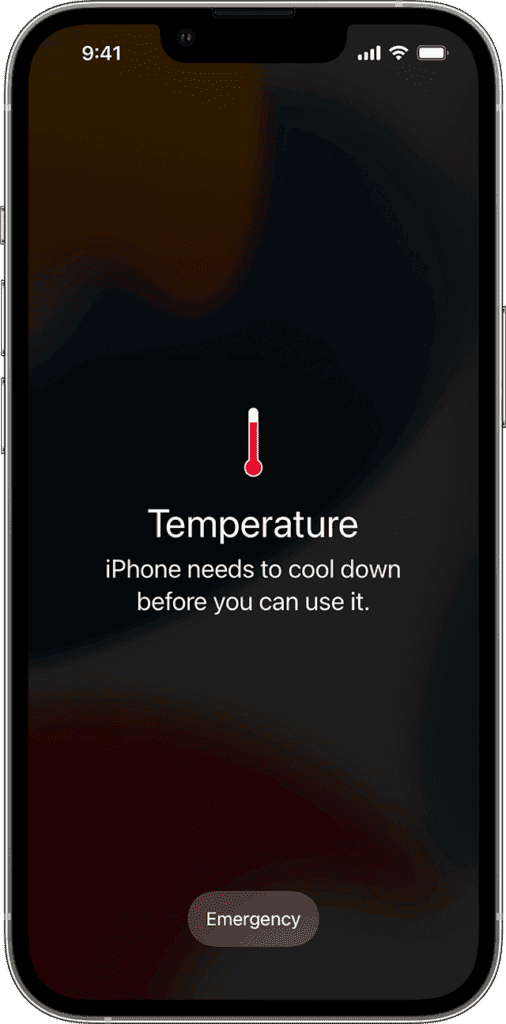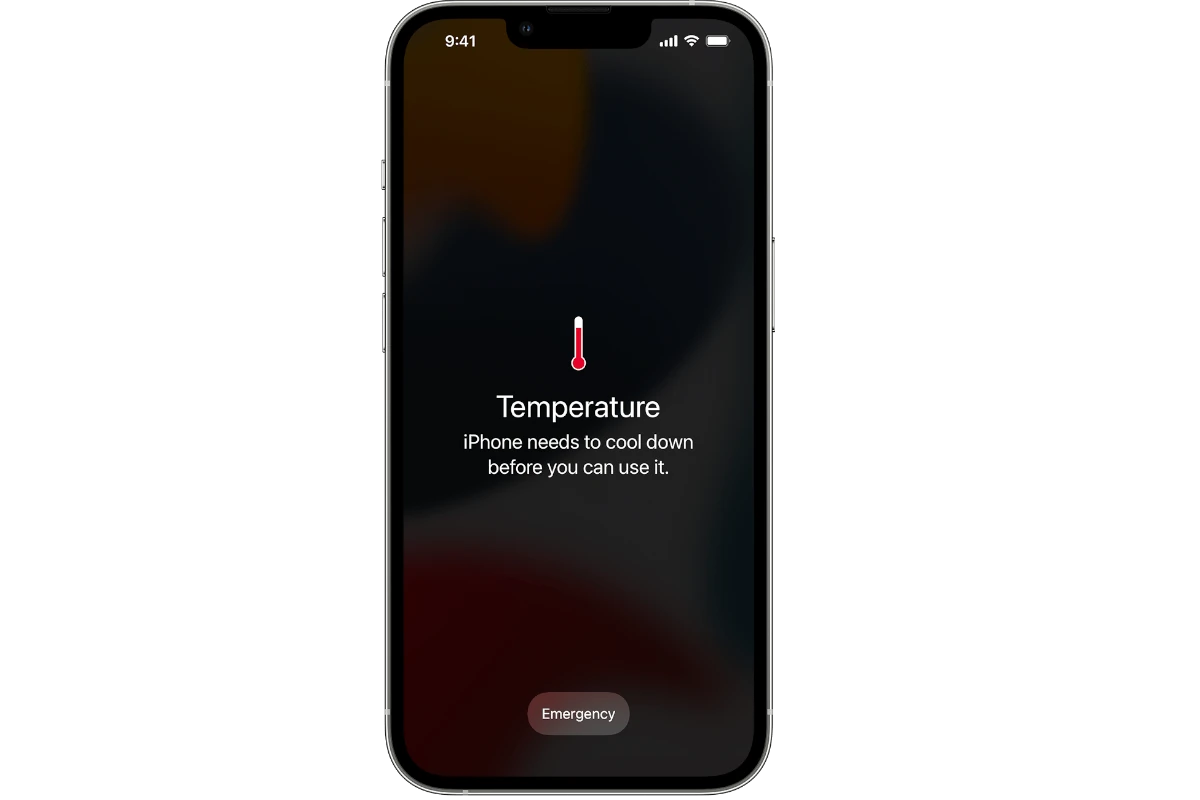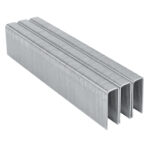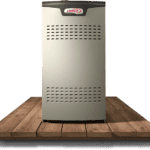When an iPhone gets too hot, it could be an indication that something is wrong. iPhones have a safe ambient temperature range, between 0º and 35º C (32º to 95º F), within which they are designed to operate. If the temperature goes beyond this range, the device’s performance may be affected as it tries to regulate its temperature. If the temperature rises too high, you may see a warning that indicates the iPhone needs to cool down before you can use it again.
Various factors, such as intense usage, exposure to external heat sources, or software issues, can cause the internal temperature to rise and trigger the iPhone’s built-in safety mechanisms. To prevent overheating, users should keep their iPhones away from direct sunlight and high temperatures, regularly update their device and apps, and avoid using intensive features for extended periods.
Tips for Handling an Overheating iPhone
Overheating can cause iPhones to slow down, misbehave, or even shut down entirely. It’s a common problem, but understanding the potential causes and solutions can help you prevent damage and stay connected.
Why iPhones Can Overheat
- Intense Activities: Using resource-heavy apps, gaming for long periods, or running GPS navigation puts a strain on your iPhone, causing it to generate heat.
- High Temperatures: Leaving your iPhone in direct sunlight, in a hot car, or in other hot environments can lead to overheating.
- Software Bugs: Sometimes iOS updates or individual apps can have bugs leading to excessive battery usage and therefore, overheating.
- Hardware Issues: Aging batteries or a malfunctioning charging port can also lead to heat problems.
How to Cool Down an Overheated iPhone
- Give it a Break: Close all apps, and stop using your iPhone for a while.
- Move to a Cooler Spot: Get your phone out of the sun or away from other heat sources.
- Remove Case: Phone cases can trap heat. Remove yours temporarily.
- Airplane Mode: Turn on Airplane Mode to pause all wireless connections, reducing resource usage.
- Update Everything: Ensure your iOS and apps are updated to the latest versions.
Preventing Overheating
| Action | What it Does |
|---|---|
| Lower screen brightness | Less screen power equals less heat |
| Manage background app refresh | Control which apps update in the background, saving resources |
| Disable location services when unnecessary | GPS uses processing power and can generate heat |
| Use Low Power Mode | Reduces background activity and battery drain |
| Avoid wireless charging under some circumstances | Wireless chargers generate more heat than wired ones |
When to Seek Assistance
If your iPhone overheats repeatedly, or if the above tips don’t help, it’s possible there’s a hardware problem. Contact Apple Support for further help.

Key Takeaways
- iPhones perform best between 0º and 35º C and show a temperature warning when overheating.
- External conditions and intensive usage can cause an iPhone to overheat.
- To prevent overheating, avoid heat sources, update software, and limit intensive usage.
Understanding iPhone Overheating
Overheating can affect your iPhone’s performance and battery life. It’s useful to know why it happens, how it impacts your phone, and the signs to look out for.
Causes of Overheating
Heat can build up in an iPhone for several reasons. Devices might get too hot if used for intense activities like gaming or streaming videos for long periods. Exposing phones to high temperatures, such as leaving them in direct sunlight, also leads to overheating. Even a phone case can trap heat around the device.
- Intensive Use: Streaming, gaming, or using apps that demand a lot of power.
- Environment: Hot weather or direct sunlight can raise the device’s internal temperature.
- Phone Cases: Some cases retain heat and prevent it from escaping.
Effects on Performance and Battery Life
Heat affects iPhone components. It can make the device slow down or cause it to shut down unexpectedly. Over time, high temperatures can damage the battery, leading to shorter battery life. Apple designs iPhones to operate within a safe temperature range. If the device exceeds this range, performance issues can occur, which helps ensure the safety of the internal components.
- Performance: Overheating can cause apps to run slow or your phone to shut down.
- Battery Life: Long-term heat exposure can reduce battery efficiency.
Recognizing Overheating Symptoms
You’ll know your iPhone is too hot when it slows down or gets a temperature warning screen. The iPhone may also feel hot to the touch. If these symptoms occur, it’s time to let your device cool down.
- Temperature Warning: A screen message indicating the phone needs to cool down.
- Device Feel: An unusually warm or hot surface can indicate heat issues.
Remember, these signs mean it’s time to take action to protect your device.
Prevention and Resolution
Keeping an iPhone cool is key to maintaining its performance and longevity. Here’s what you need to do to stop your phone from getting too hot and how to cool it down if it does.
Maintaining Optimal Temperature
iPhones work best at 0º to 35º C. Avoid extreme temperatures to prevent overheating. If your phone gets too hot, it might show a temperature warning message. Move it to a cooler spot and let it cool down before using it again.
Managing Apps and Settings
Too many apps running at once can heat up your iPhone. Use these tips to prevent this:
- Close apps you’re not using by swiping them away in the App Switcher.
- Turn off Background App Refresh in the Settings to stop apps from updating when you’re not using them.
- Set Auto-Brightness to adjust the screen based on lighting or lower the screen brightness manually through the Control Center.
Hardware Considerations and Best Practices
How you handle your iPhone makes a difference. Remember these hints:
- When charging, use an official Apple charger or MFi-certified charger. Avoid third-party chargers as they can cause harm.
- Remove the case during heavy use like gaming or streaming high-quality video to help your iPhone stay cool.
- A restart can fix many issues. Press the side button and either volume button to slide to power off. Then restart your iPhone after a minute.
Remember, keep your phone updated with the latest software updates for bug fixes and performance improvements. These updates often manage the phone’s temperature better.
Identifying the Causes of iPhone Overheating
When your iPhone gets too hot, it can be due to various issues ranging from the battery to the settings. Understanding these can help you solve and prevent overheating.
Battery and Charging Issues
Batteries are essential for powering your iPhone, but they can also be a source of heat. If a battery is old or damaged, it may overheat, especially while charging. Using a faulty charging cable or an incompatible third-party charger can also cause your iPhone to stop charging and start overheating. Here’s what to check:
- The condition and age of your iPhone battery
- The quality of your charging cable and charger
Software and App-related Challenges
Sometimes software troubles, like bugs in an iOS update or a specific app, can make the processor work harder, generating more heat. It’s important to keep your iPhone’s software and apps updated. Regular updates include fixes for these bugs. Also, disabling Background App Refresh in Settings can reduce the workload on your phone and help manage heat. Consider these factors:
- Are all apps and iOS up to date with the latest update?
- Is Background App Refresh turned off?
Environmental Factors and Usage Patterns
The environment you use your iPhone in can affect its temperature. Exposure to high ambient temperatures or direct sunlight can raise the phone’s internal heat. Intensive activities like GPS navigation, video streaming, or gaming push the processor to work harder, which can increase heat. Keep in mind:
- Avoid using your iPhone in direct sunlight or very hot places.
- Give it a break during heavy use like gaming or streaming.
Preventive Measures and Solutions
When an iPhone gets hot, it could be a signal that it needs a bit of care. In this section, we’ll explore how to keep your iPhone cool by managing its settings, maintaining its hardware, and using accessories wisely.
Adjusting Settings for Better Performance
Lower the Brightness: High screen brightness demands more power, leading to more heat. By reducing brightness or enabling Auto-Brightness, your iPhone can stay cooler. Head to Settings > Display & Brightness and slide the brightness bar down or toggle on Auto-Brightness.
Turn Off Background App Refresh: This feature allows apps to update content when on Wi-Fi or cellular in the background. However, it can strain your iPhone’s CPU and lead to overheating. Disable it by going to Settings > General > Background App Refresh and tapping Off.
Use Low Power Mode: Activating Low Power Mode decreases the amount of power your iPhone uses. When on, mail fetch, background app refresh, and some visual effects are reduced, thus lowering heat production. Turn it on by going to Settings > Battery and toggling Low Power Mode.
Maintenance and Hardware Considerations
Avoid Extreme Temperatures: Your iPhone’s ideal temperature range is -20º to 45º C (-4º to 113º F). Keeping your device out of the sun and away from heat sources prevents damage and maintains battery life.
Reset Your iPhone: When all else fails, resetting can sometimes fix overheating. Press and hold the side button and either volume button until two sliding buttons appear, then slide to power off. After a minute, hold the side button to turn your iPhone back on.
Seek Professional Help: If your iPhone consistently overheats, it might indicate a hardware problem. In such cases, visiting an Apple Store or an authorized iPhone repair center can help you avoid serious damage.
Handling and Protective Accessories
Choose the Right Case: A case that’s too insulated might trap heat. Use a case that allows for proper heat dissipation. If your iPhone is getting hot, try removing the case temporarily to see if it helps.
Don’t Charge Inappropriately: Avoid charging your iPhone with uncertified cables or in environments that can get too warm, like under pillows. Also, wireless charging tends to generate more heat; if your phone is hot, switch to a cable.
By following these suggestions, you can better manage your iPhone’s temperature and overall performance, ensuring a longer lifespan and smoother operation.
Frequently Asked Questions
This section addresses common concerns about iPhone overheating, providing clear insights and steps for prevention and resolution.
What could be causing my iPhone to overheat?
Overheating can happen when using apps that demand high processing power or during prolonged charging. It can also be due to external factors like hot climates.
How can I prevent my iPhone from getting too hot?
To keep an iPhone cool, avoid exposing it to direct sunlight and remove its case during heavy usage. Limit the use of intensive apps and ensure your software is up to date.
At what temperature does an iPhone typically display a temperature warning?
iPhones generally show a temperature warning when they exceed the safe operating range, which is usually between 32 and 95 degrees Fahrenheit.
Are there any long-term risks associated with an iPhone overheating?
Continuous overheating can lead to battery damage or reduced performance over time. It’s important to address these issues quickly to avoid long-term risks.
What immediate steps should I take if my iPhone overheats?
If your iPhone is hot, turn it off and let it cool down. Avoid charging it until it returns to a normal temperature. If unresponsive, a forced restart might be necessary.
Is there a particular model of iPhone that is more susceptible to overheating issues?
Some models may overheat more based on their design and processing capabilities. However, all iPhones can overheat under certain conditions, such as exposure to extreme temperatures or overuse.




